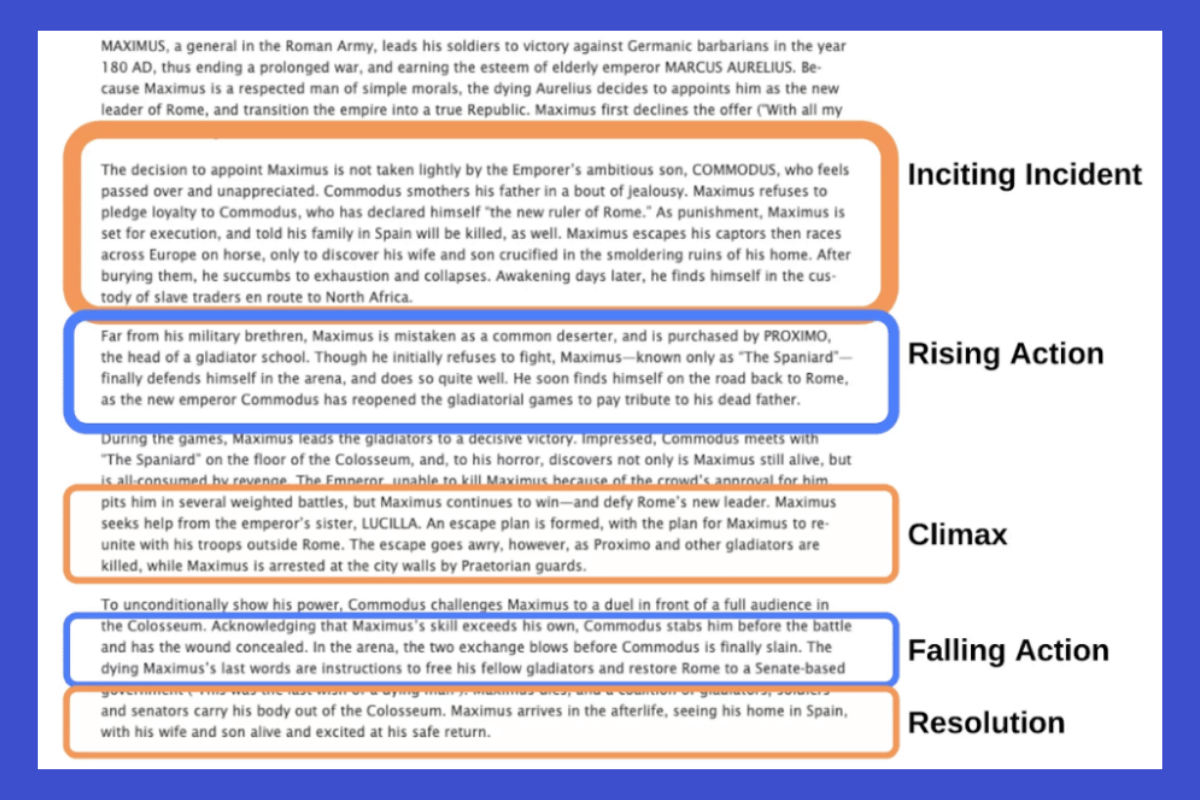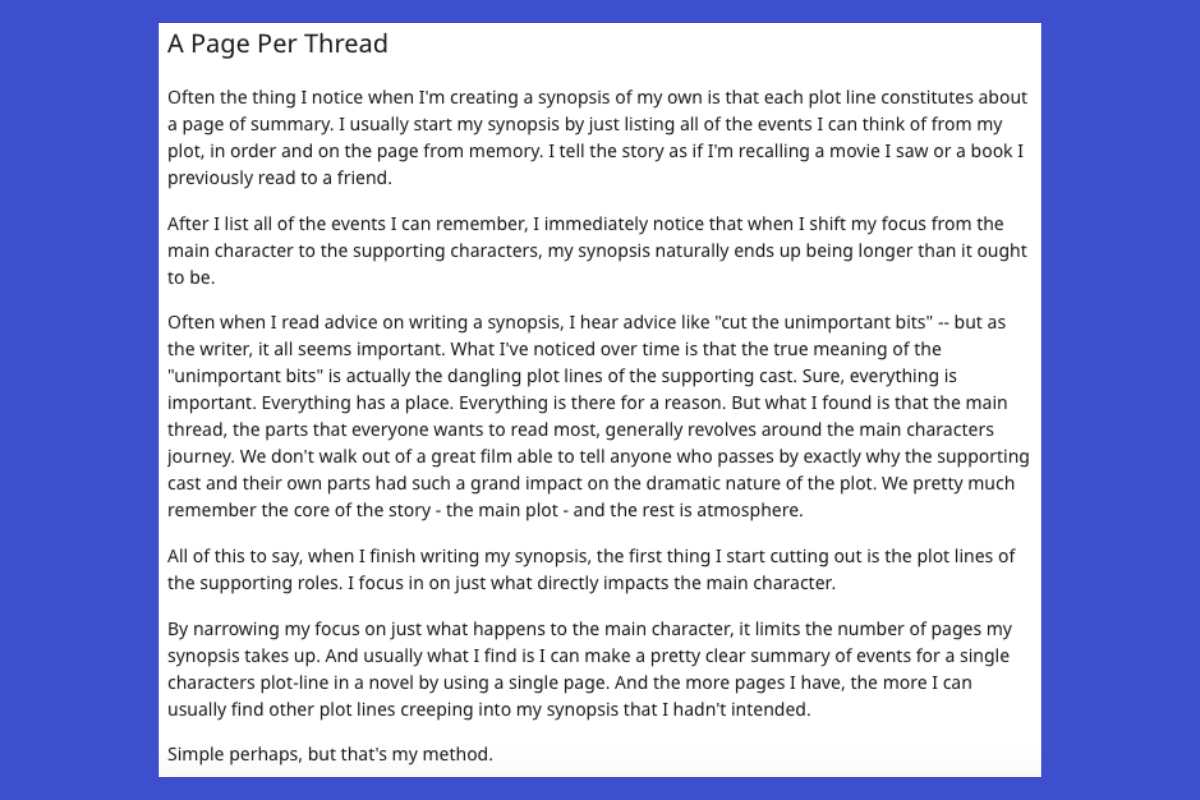How to Write a Synopsis for Self-Publishing

Know what a synopsis is? And is it needed for your self-published book? If yes, how to write a synopsis for self-publishing? I answer these questions below.
What is a synopsis?
As defined by our good ole Merriam-Webster dictionary, a synopsis is “a condensed statement or outline.”
So writing a book synopsis looks like condensing tens of thousands of words into about 500 words. It should give a rundown of the entire plot of your book while being concise and compelling.
In traditional publishing, an agent or publisher will request a synopsis when you submit your manuscript to them.
But is a synopsis required for your self-published book? The short answer: no!
The best thing about self-publishing is how you can skip the gatekeepers and start selling your book on your own terms. There’s no need for pitching your synopsis and query letter to literary agents, trade publishers, and whoever else.
However, there are benefits to using a good synopsis for self-publishing –
P.S. PublishDrive is an online self-publishing platform that helps with distribution, marketing, royalty reporting, and everything else in between.
It’s free to publish your 1st ebook on PublishDrive. Or try out a paid plan and get your money back if you’re not satisfied.
How to use a synopsis for self-publishing
Author Michelle Cornish shares a handful of ways to use a synopsis:
1. To use before you draft
“I like to write a synopsis before I draft my book. It helps me figure out if my ideas have any weight by free-writing around my story idea.”
When crafting her synopsis, Michelle imagines her audience as potential agents. This gets her to include all key pieces, turning points, and plot twists of the story.
2. To save on editing
Here’s a cool tip: have an editor review your synopsis before officially writing. This can help with gaining clarity on your idea, ultimately saving time and money on editing costs.
Michelle had an editor look over her synopsis before the writing process: “...we had such a fabulous discussion around it I came away from our call with clarity regarding where the plot was going and a fresh idea for a twist at the end.”
3. To analyze your plot

Writing a synopsis can be a powerful practice to analyze and flesh out your plot. A different perspective or medium, such as a synopsis, may help you see how a certain plot point can be further developed. Or maybe you wish to re-calibrate a particular point of view. Polish your manuscript to perfection, before it hits the market.
4. To share ideas with cover designers
A synopsis is a fantastic way to share the heart and vibe of your story. Why not send it over to your cover designer? Some designers even require a one-page synopsis.
5. To use for marketing
Marketing is for selling. What makes your book enticing? Try editing your two-page synopsis down to one page. Then pull out the most significant parts. Now you’ve got golden nuggets to add to your book description, advertising copy, and beyond.
How to write a synopsis for self-publishing
Let’s learn how to write a synopsis. Here are 8 pointers to keep in mind:
1. Write in the present tense and the third person
Write your synopsis in the present tense and the third person (even if your book isn’t). The third person enacts a more professional tone. ALLi shares how “present tense can be more vivid and compelling in many ways. At any event, use active language, not passive, and keep sentences punchy and informative, not long and rambling.”
2. Keep your word count between 500 and 800
BookBeaver shares how “a book synopsis should be between 500 and 800 words. This works out at approximately 1 single spaced page in a standard 12pt font.”
3. Start with the premise
Your premise is the introduction of your synopsis. It goes over your narrative arc in its entirety, including the setting, conflict, and hook. Give some extra attention here. You want your premise to be unique and entertaining.
4. Cover all plot points
Kindlepreneur shares a rather simple synopsis format. Here’s an example for Gladiator:

After your premise, there are five key plot points to cover:
- Inciting Incident: Where the major conflict begins, setting your book’s entire premise in motion.
- Rising Action: Events that allow your plot to move towards its climax.
- Climax: The most significant, exciting, and highest peak of your story.
- Falling Action: Events that take place after the climax.
- Resolution: Your major conflict has been resolved and concluded.
5. Show off the main characters
Don’t forget to include them! Share compelling character motivations and details. How do your main characters sparkle? What makes them the heroes of your story?
6. Remember to include these
Here’s a sweet recap on what to include, by self-publishing veteran ALLi:
“You need to include the main character(s), what their opening situation/problem is, what inciting incident happens to start the ball rolling, what they need to achieve as a result of this event, what the forces or characters opposing their aims and ambitions are, how the crisis is resolved and how the characters have changed by the end of the book.”
7. Consider leaving these out
Generally, you can leave out the unnecessary fluff, such as:
- Rambling descriptions
- Unanswered or rhetorical questions
- Character dialogue
- Minor characters
- Flashbacks
- Sub-plots
- Sub-headings
8. Final insight
I came across this best practice on Reddit’s writing community:

And there ya have it!
Ready to self-publish your book?
With PublishDrive, access the entire self-publishing industry at your fingertips:
✅ Distribution to thousands of bookstores
✅ Marketing, royalty reporting, and more
✅ Publish your 1st ebook free!